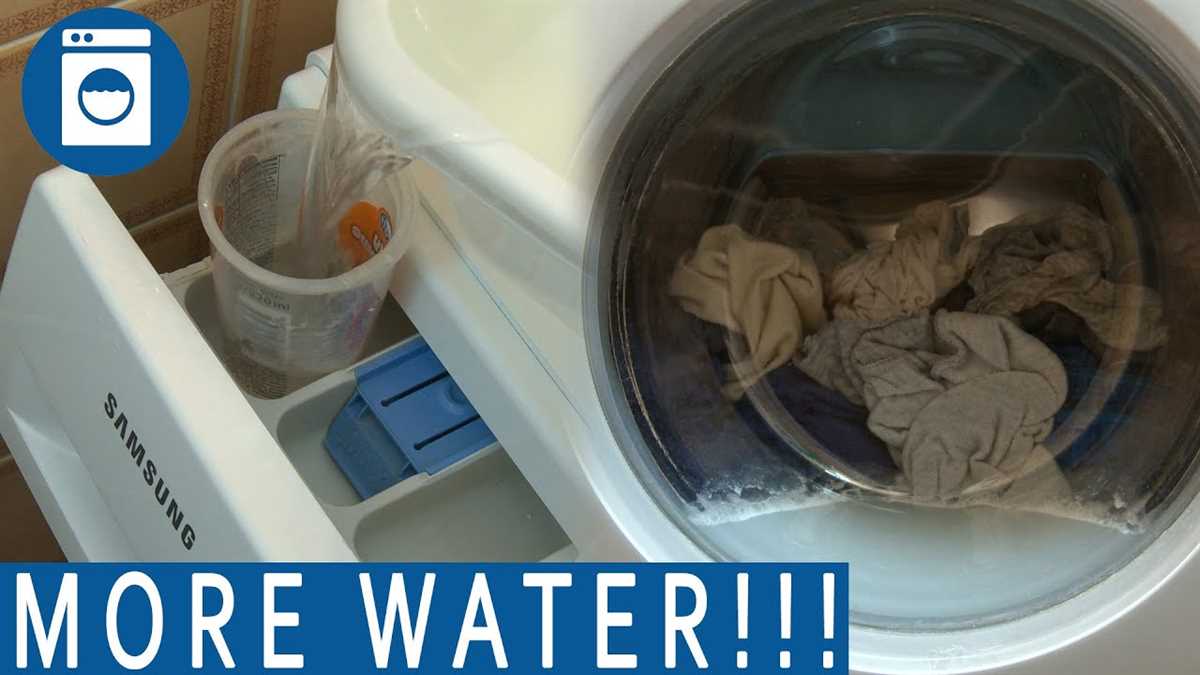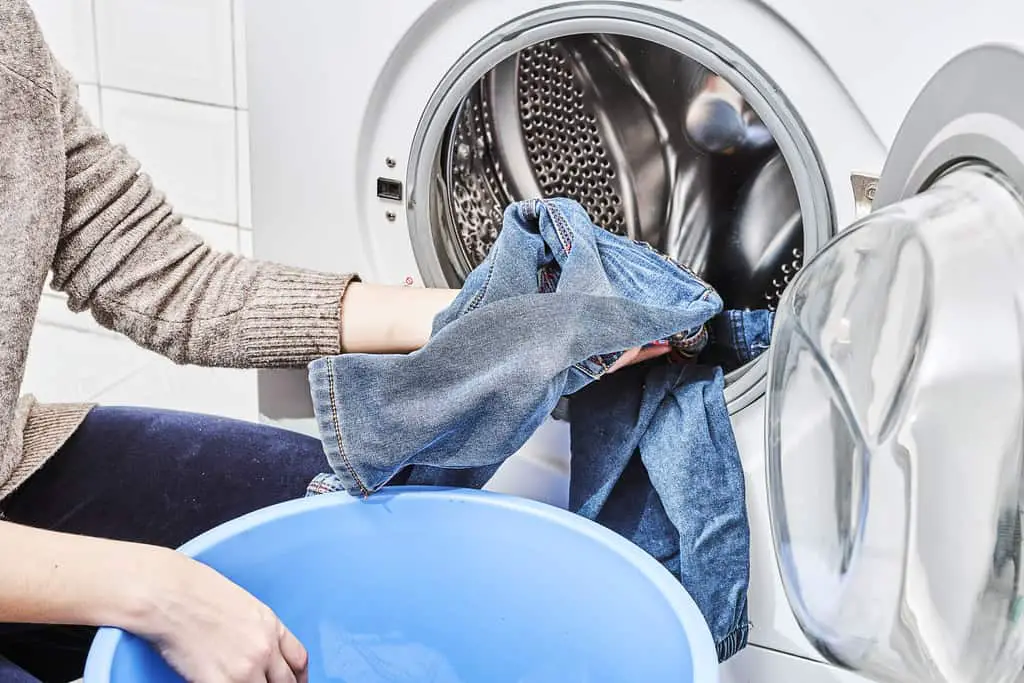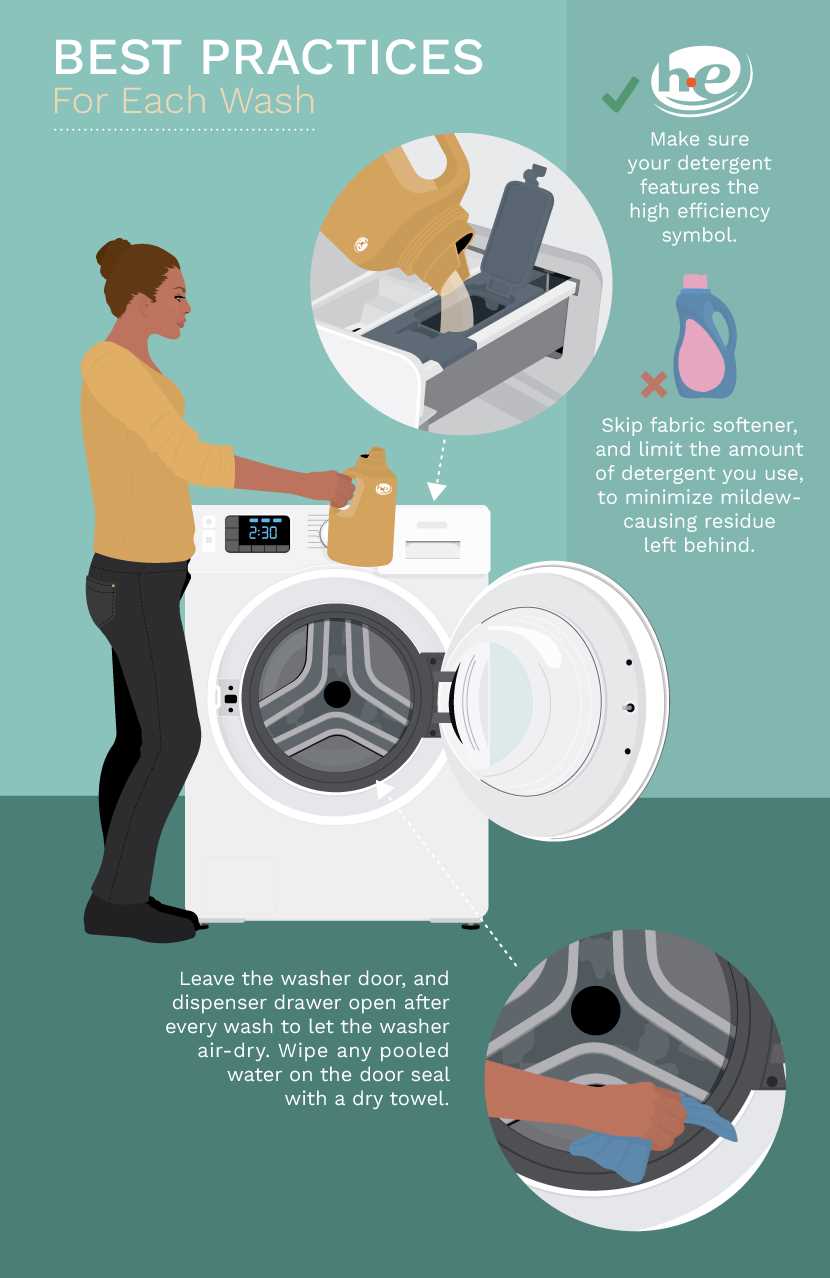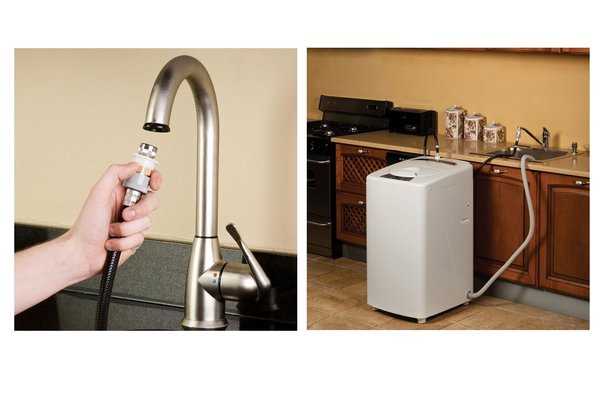


Front-loading washing machines have become increasingly popular due to their energy efficiency and water-saving features. However, many people wonder if it is possible to manually add water to these machines. Whether you want to increase the water level for a specific load or have concerns about water usage, this article will provide expert advice on whether or not you can manually add water to a front-loading washing machine.
In general, front-loading washing machines are designed to automatically control water levels based on the weight of the load and the selected cycle. This helps to optimize water usage and ensure effective cleaning. Unlike top-loading machines that allow users to manually adjust the water level, front-loaders usually do not have a manual water filling option.
While some front-loading machines may have a water inlet for maintenance purposes, it is typically not meant for adding water during a wash cycle. Attempting to manually add water may disrupt the machine’s sensors and affect its performance. Additionally, adding too much water can increase the risk of leaks or damage to the machine.
However, if you find that your front-loading machine consistently does not use enough water for your specific needs, there are a few alternative options. First, you can try using the machine’s “extra rinse” or “deep fill” options if available. These settings can help increase the water level slightly to ensure a more thorough clean.
If adjusting the settings does not provide the desired result, you may need to consider replacing your machine with a top-loading model. Top-loading washing machines typically allow for manual water level adjustments and might be better suited for individuals who prefer more control over the water usage in their laundry cycles.
In conclusion, it is generally not recommended to manually add water to a front-loading washing machine. These machines are designed to automatically adjust water levels for efficient and effective cleaning. If you have specific concerns or requirements regarding water level, it may be worth considering a top-loading machine instead. Consulting the manufacturer’s instructions and recommendations is always advisable before attempting any modifications to your washing machine.
Why Adding Water Manually to a Front-Loading Washing Machine Is Important
A front-loading washing machine is designed to offer efficiency and convenience in doing laundry. These machines are known for their water-saving features and energy efficiency. However, there are times when manually adding water to a front-loading washing machine becomes important and necessary, especially in certain circumstances.
1. Specific Cleaning Requirements
Some fabrics and garments require special care and attention, depending on their specific cleaning requirements. Adding water manually to a front-loading washing machine allows you to customize the water level based on the fabric type, size of the load, and level of dirtiness. This ensures that your delicate or heavily soiled items get the proper treatment they need.
2. Optimal Cleaning Performance
Adding water manually to a front-loading washing machine can help improve its cleaning performance. By adjusting the water level, you can create the perfect environment for thorough cleaning. This is particularly useful when dealing with large, bulky items like comforters or blankets that need extra water to move freely and be adequately cleaned. Additionally, manually adding water can help prevent tangling or wrinkling of clothes, ensuring a more effective and efficient wash.
3. Extra Rinse Cycle
Some front-loading washing machines offer an extra rinse cycle feature, which is useful for individuals with allergies or sensitivities. Adding water manually allows you to take advantage of this feature by ensuring a proper rinse to remove all traces of detergent. This helps prevent skin irritations or allergic reactions caused by residual detergent on clothes.
4. Enhanced Control

Manually adding water to a front-loading washing machine gives you greater control over the washing process. You can adjust the water level according to your preference or needs, whether it’s conserving water for an eco-friendly wash or ensuring a deep clean for heavily soiled items. This flexibility allows you to tailor the washing machine’s operation to suit your specific requirements.
5. Emergency Situations
In some cases, a front-loading washing machine may experience issues with water supply or drainage. Manually adding water can help overcome these emergencies by ensuring that the washing cycle can continue. This can be particularly helpful if you’re in a rush and need to complete a load of laundry quickly.
Conclusion

While front-loading washing machines offer many benefits, there are instances where adding water manually becomes necessary and important. Whether it’s for specific cleaning requirements, improved cleaning performance, utilizing extra rinse cycles, enhanced control, or situations where the machine encounters issues, manually adding water provides solutions and helps achieve the desired washing outcome.
Maintaining Proper Water Levels
In order to ensure that your front-loading washing machine functions properly, it is important to maintain proper water levels. Below are some tips to help you maintain the right amount of water in your machine:
- Check the Water Inlet Valve: Inspect the water inlet valve regularly to make sure it is clean and free from any debris. A clogged valve can restrict water flow into the machine.
- Adjust the Water Pressure: If your machine is not filling with enough water, you may need to adjust the water pressure. Consult the user manual or contact the manufacturer for specific instructions on how to adjust the water pressure on your machine.
- Use the Correct Water Level Setting: Most front-loading washing machines have different water level settings to accommodate different load sizes. Make sure you are using the appropriate setting for the amount of laundry you are washing.
- Load the Machine Correctly: Overloading the machine can result in improper water levels. Follow the manufacturer’s guidelines for load capacity and avoid stuffing too many clothes into the machine.
- Monitor the Water Fill Cycle: During the water fill cycle, pay attention to the water level in the machine. If it seems too low, you may need to manually add water to ensure proper levels. Refer to the manufacturer’s instructions on how to do this safely.
- Clean the Machine Regularly: Over time, mineral deposits and detergent residue can build up in the machine, obstructing water flow. Clean your machine regularly with a descaling solution or vinegar to maintain optimal water levels.
- Consult a Professional: If you are experiencing consistent issues with water levels in your front-loading washing machine, it is best to contact a professional technician for assistance. They can diagnose and solve any underlying problems that may be affecting water levels.
By following these tips, you can help ensure that your front-loading washing machine maintains proper water levels and operates efficiently.
Achieving Optimal Cleaning Results
To achieve optimal cleaning results with your front-loading washing machine, it is important to follow some key tips and guidelines.
1. Sort your laundry
Before starting a wash cycle, sort your laundry according to color and fabric type. This will help to prevent color bleeding and damage to delicate fabrics.
2. Use the right detergent
Choose a high-quality detergent that is suitable for your laundry needs. Follow the manufacturer’s instructions on the detergent packaging to determine the correct amount to use.
3. Load the machine properly
Properly load the washing machine to ensure that clothes have enough space to move freely. Overloading the machine can reduce its cleaning effectiveness.
4. Select the appropriate wash cycle
Front-loading washing machines offer a variety of wash cycles for different types of laundry. Select the appropriate cycle based on the fabric type and level of dirtiness.
5. Add water manually if needed
In some cases, you may need to add water manually to ensure the optimal water level for cleaning. Follow the manufacturer’s instructions on how to add water to your specific model of front-loading washing machine.
6. Maintain the machine
Regularly clean the machine’s drum, detergent dispenser, and door seal to prevent the buildup of dirt and residue that can affect cleaning results.
7. Don’t leave wet laundry in the machine
Remove your laundry from the machine as soon as the wash cycle is complete. Leaving wet laundry in the machine for an extended period of time can lead to unpleasant odors and mold growth.
8. Air-dry delicate items

Air-drying delicate items, such as lingerie or fine knits, can help maintain their shape and prevent damage. Check the care labels on your clothing for specific drying instructions.
9. Follow garment care labels
Always refer to the care labels on your clothing for specific washing instructions. This will help ensure that you are using the correct settings and temperature for each garment.
10. Consider using a laundry booster
If you have heavily soiled garments or stubborn stains, consider using a laundry booster or stain remover to enhance the cleaning power of your detergent.
By following these tips, you can achieve optimal cleaning results with your front-loading washing machine and keep your laundry looking fresh and clean.
Addressing Water Pressure Issues
Front-loading washing machines require a certain water pressure to function properly. If you are experiencing water pressure issues, it is important to address them promptly to ensure your washing machine works efficiently. Here are some steps you can take to address water pressure issues:
1. Check the Water Supply

Start by checking if there are any issues with the water supply. Make sure the main water valve is fully open and the water supply to your house is not experiencing any disruptions. Check for any leaks or blockages in the water supply lines leading to the washing machine.
2. Clean the Filters
Front-loading washing machines typically have filters to prevent debris from entering the machine. These filters can become clogged over time, resulting in reduced water pressure. Refer to your washing machine’s manual to locate the filters and clean them if necessary. Regularly cleaning the filters can help maintain good water pressure.
3. Remove Limescale Buildup
Limescale buildup can also cause water pressure issues in front-loading washing machines. Over time, mineral deposits can accumulate in the water inlet valve, hoses, or other parts of the machine, restricting the flow of water. Use a descaling agent recommended for washing machines to remove limescale buildup and restore proper water pressure.
4. Check for Hose Kinks or Twists
Inspect the hoses connected to your washing machine for any kinks or twists. These can restrict the flow of water and cause water pressure issues. Straighten out any kinks or twists in the hoses to ensure smooth water flow.
5. Upgrade Your Water Supply

If you have tried the above steps and are still experiencing water pressure issues, it may be necessary to upgrade your water supply. Consult a professional plumber to assess your current water supply system and determine if any upgrades are needed to meet the requirements of your front-loading washing machine.
By addressing water pressure issues promptly, you can ensure your front-loading washing machine works efficiently and effectively. Regular maintenance, such as cleaning filters and removing limescale buildup, can help prevent future water pressure problems.
Avoiding Overloading the Machine
Overloading a front-loading washing machine can have a negative impact on its performance and can lead to potential damage. To avoid overloading the machine, keep the following tips in mind:
- Follow the manufacturer’s instructions: Every washing machine has a maximum load capacity, which is typically mentioned in the instruction manual. Make sure you are aware of this limit and do not exceed it.
- Use the machine’s load sensor: Many front-loading washing machines are equipped with load sensors that weigh the laundry and adjust water consumption accordingly. This feature helps prevent overloading and ensures efficient use of water and detergent.
- Sort your laundry: Sort your laundry based on colours, fabric types, and washing instructions. Washing similar items together will allow for a more balanced load and reduce the risk of overloading.
- Avoid packing clothes tightly: It is important to leave enough room for the water to circulate freely during the wash cycle. Overstuffing the machine can prevent proper washing and rinsing.
- Consider using smaller loads: Instead of trying to fit all your laundry in one load, consider doing smaller loads to ensure proper cleaning and avoid overloading the machine.
- Pre-treat heavily soiled items: For heavily soiled items, pre-treating them before putting them in the washing machine can help improve the wash results and reduce the need for additional cycles.
By following these guidelines, you can avoid overloading your front-loading washing machine and ensure optimal cleaning performance.
Expert Advice on Adding Water Manually
Adding water manually to a front-loading washing machine can be a tricky task, but with the right technique, it is possible to do so. Below are some expert tips and advice on how to add water manually to a front-loading washing machine:
1. Check the Manufacturer’s Instructions
Before attempting to add water manually, it is important to consult the manufacturer’s instructions for your specific washing machine model. Some machines may have specific guidelines or restrictions on manually adding water. Following the manufacturer’s instructions will ensure that you do not damage your machine.
2. Use a Bucket or Hose
To manually add water to your front-loading washing machine, you can use a bucket or a hose. If you choose to use a bucket, fill it with water from a water source such as a sink or bathtub. Slowly pour the water into the detergent drawer or directly into the drum of the machine.
If you prefer to use a hose, attach one end of the hose to a water source and the other end to the detergent drawer or drum of the machine. Turn on the water source and let the water flow into the machine.
3. Be Mindful of the Water Level

When manually adding water to a front-loading washing machine, it is important to be mindful of the water level. Too much water can cause the machine to overflow, while too little water may not provide adequate cleaning.
Refer to the manufacturer’s instructions for the recommended water level for your specific machine. Alternatively, you can start with a smaller amount of water and adjust as needed based on the load size and type of fabric you are washing.
4. Use the Correct Detergent Amount
Adding water manually may require you to adjust the amount of detergent you use. Follow the manufacturer’s instructions on the detergent packaging for the recommended amount based on the load size and water level.
Using too much detergent can result in excessive sudsing, while using too little may not effectively clean your clothes. Experiment with different detergent amounts to find the right balance for your manual water addition method.
5. Run a Test Cycle
After manually adding water to your front-loading washing machine, it is advisable to run a test cycle to ensure proper functioning. This will help you identify any issues or adjust the water level and detergent amount if necessary.
Follow the regular washing instructions for your machine, including selecting the appropriate wash cycle and settings. Observe the machine during the test cycle to ensure that the water is properly distributed and the clothes are being cleaned effectively.
Remember, manually adding water to a front-loading washing machine should only be done if necessary and within the guidelines set by the manufacturer. If you are unsure or struggling with the process, it is always recommended to consult a professional or the manufacturer for assistance.
FAQ
Can I manually add water to my front-loading washing machine?
Yes, you can manually add water to a front-loading washing machine. Most front-loading machines have a detergent drawer where you can pour water in directly if needed.
Why would I need to manually add water to my front-loading washing machine?
There could be a few reasons why you might need to manually add water to your front-loading washing machine. For example, if the water pressure in your home is low, it may not fill the machine with enough water. Additionally, if you have a larger load of laundry or heavily soiled items, you may want to add extra water for better cleaning.
How can I manually add water to my front-loading washing machine?
To manually add water to a front-loading washing machine, you can use a bucket or container to pour water into the machine through the detergent drawer or the open drum. Just make sure to be careful not to overfill the machine, as it needs space for the clothes to agitate and move around.
Is it safe to manually add water to my front-loading washing machine?
Yes, it is safe to manually add water to a front-loading washing machine. However, you should always follow the manufacturer’s instructions and guidelines to avoid any potential damage to the machine.
Can adding water manually affect the washing machine’s performance?
Adding water manually to a front-loading washing machine may affect its performance if not done correctly. Overfilling the machine can cause it to become unbalanced during the spin cycle, which can lead to damage. It is important to only add the necessary amount of water for your specific load size and follow any guidelines provided by the manufacturer.
Is it possible to add water manually to a front-loading washing machine?
Yes, you can manually add water to a front-loading washing machine. Most front-loading machines have a detergent drawer where you can pour water directly into the machine. However, it’s important to note that adding too much water can cause the machine to overflow, so it’s best to add water in small increments.
How do I manually add water to a front-loading washing machine?
To manually add water to a front-loading washing machine, locate the detergent drawer on the machine. Depending on the model, there may be a designated compartment for adding water. Simply pour the desired amount of water into the compartment and close the drawer. Remember to add water in small increments to avoid overfilling the machine.












